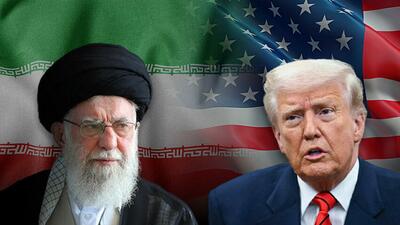
| Published June 25, 2025
‘We may sign an agreement, I don’t know,’ Trump tells NATO conference, claiming US and Israel destroyed Iran’s nuclear program and ‘I don’t care if I have an agreement or not’
Former President Donald Trump has announced that the United States will hold talks with Iran next week, but he also signaled a major shift in Washington’s approach by suggesting that a new nuclear deal may no longer be necessary. Speaking at a press event during the NATO summit, Trump claimed that recent U.S. and Israeli military strikes had already neutralized Iran’s nuclear capabilities, rendering formal diplomatic agreements less urgent. His remarks mark a stark departure from previous U.S. policy, raising questions about the future of nuclear diplomacy, regional stability, and the broader U.S.-Iran relationship.
📌 What Trump Said
-
Speaking at the NATO summit in The Hague on June 25, 2025, Trump announced that “U.S. and Iranian officials will talk next week,” marking a shift toward potential renewed diplomacy.
-
However, he added that while “we may sign an agreement, I don’t know,”—“to me, I don’t think it’s that necessary,” since “we destroyed the nuclear. … Iran will not have nuclear.”
🔍 Key Claims and Context
-
Trump’s rationale: He insists that Friday’s U.S. strikes (and coordinated Israeli airstrikes) “obliterated” Iran’s nuclear infrastructure at facilities like Fordow, Natanz, and Arak ― reducing its nuclear ambitions “for many years to come”.
-
Contradicting intelligence: U.S. intelligence agencies report the strikes set Iran’s program back only by a few months—not destroyed entirely.
-
Diplomatic posture: Trump emphasized the ceasefire and implied that without nuclear capability, a formal deal may be optional: “They fought, the war is done,” suggesting Iran’s incentive to rebuild is low.
 Implications
Implications
1. Shift Away from Diplomatic Norms
By declaring a nuclear deal “not necessary,” Trump signals a preference for unilateral military deterrence over negotiated agreements like the 2015 JCPOA. This undermines multilateral diplomacy and may strain ties with European allies who still support diplomatic frameworks.
2. Precedent for Preventive Military Action
Trump’s assertion that U.S. strikes “destroyed” Iran’s nuclear infrastructure suggests a doctrine of preemptive force over long-term containment. This raises concerns about escalation and sets a precedent that could be replicated by other nations facing nuclear concerns.
3. Iranian Response and Credibility Gap
Tehran has denied the extent of the nuclear damage and has so far rejected direct talks. If the U.S. overstates the impact of its strikes, it risks misjudging Iran’s capabilities and intentions, potentially leading to false confidence or miscalculated risks.
4. Regional Stability and Risk of Retaliation
Without a binding deal, deterrence relies on ongoing vigilance. Iran’s regional proxies (like Hezbollah and militias in Iraq or Syria) may retaliate asymmetrically, especially if they perceive diplomacy as dead and military action as the norm.
5. Uncertain Path for Future U.S. Policy
A future administration may be forced to revisit negotiations from scratch. Trump’s stance complicates long-term strategy, as it departs from institutional memory and existing frameworks, creating ambiguity for allies and adversaries alike.
💬 Overall Takeaway:
Trump’s declaration that a nuclear deal with Iran is no longer necessary marks a bold—and controversial—departure from traditional U.S. foreign policy. While he frames the shift as a result of decisive military success, intelligence assessments and diplomatic pushback suggest the situation remains fluid and potentially volatile. The coming talks may clarify intentions, but without a formal agreement, the risk of miscalculation, renewed conflict, or a regional arms race remains high. Whether this new approach leads to lasting stability or deeper instability will depend on what follows in both diplomacy and deterrence.




